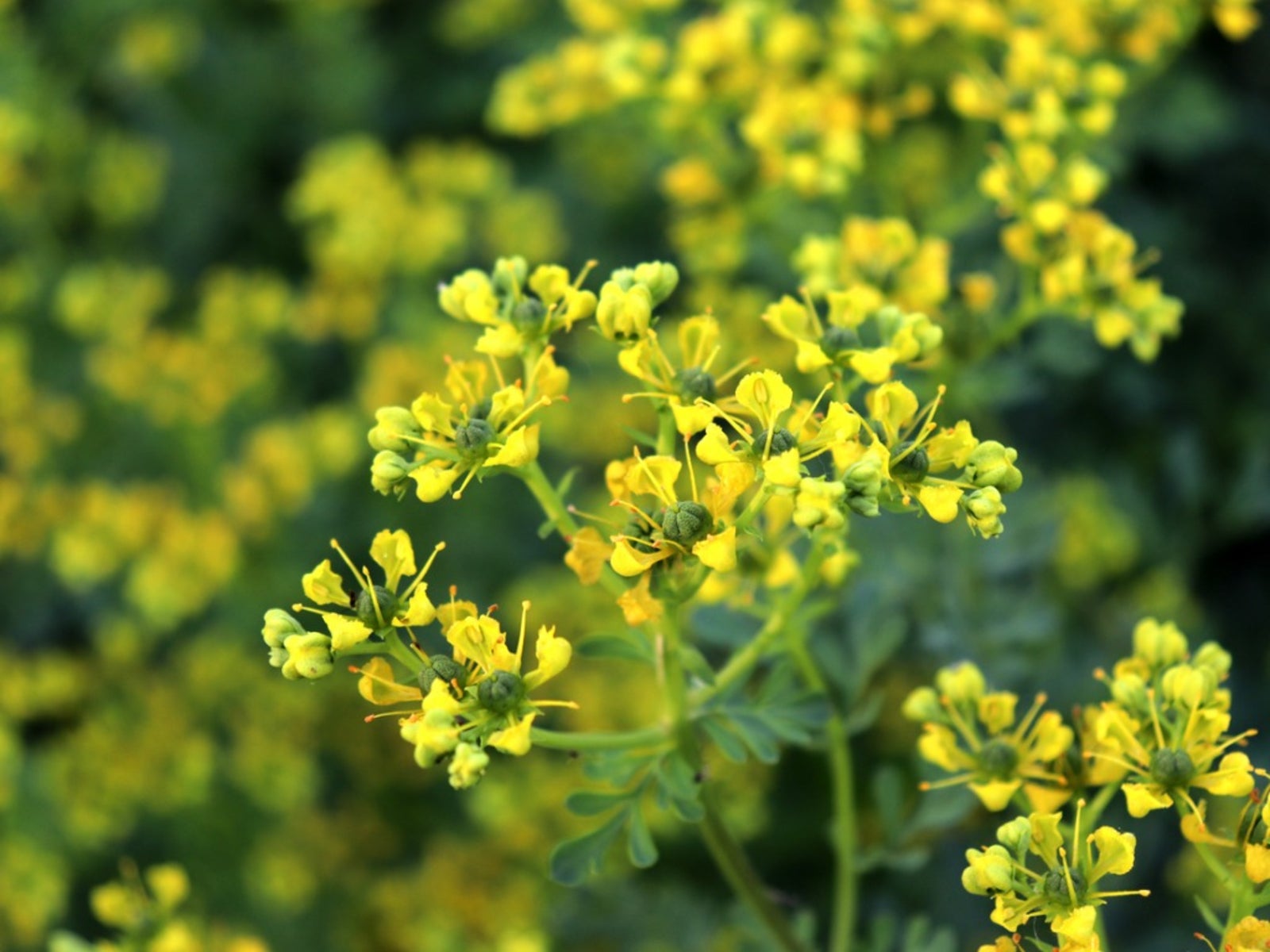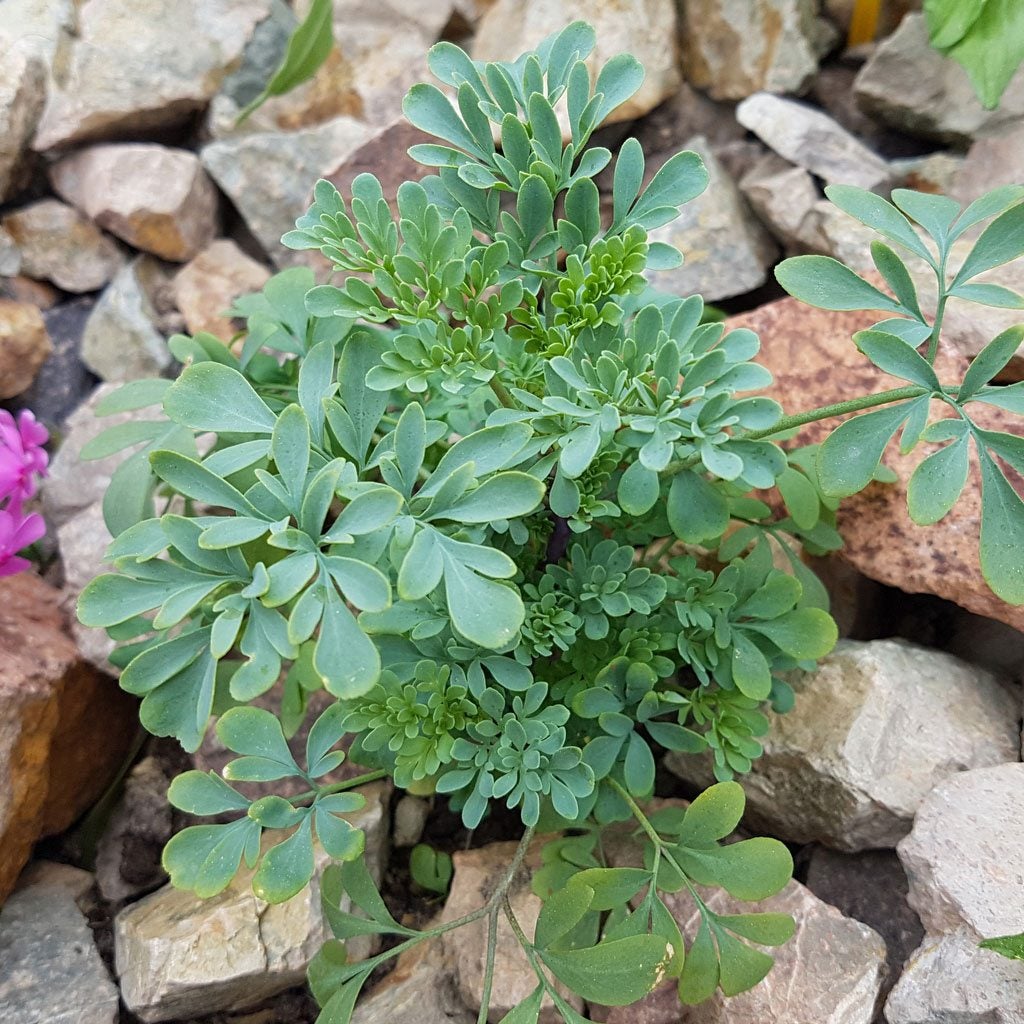Growing Rue Herb - Tips For Rue Plant Care


The rue herb (Ruta graveolens) is considered to be an old fashioned herb garden plant. Once grown for medicinal reasons (which studies have shown to be mostly ineffective and even dangerous), these days rue plants are rarely grown in the garden. But just because an herb has fallen out of favor for its original intent does not mean that it can't have a place in the garden for other reasons.
What is Rue Plant?
While little known, growing rue herb in the garden can be helpful to a gardener in a number of ways. Its strong smell is a repellent to many creatures, including dogs, cats and Japanese beetles. Because of this, it makes an excellent companion plant. It has semi-woody growth, which means that it can be pruned into hedges. It attracts some types of butterflies, and, last but not least, makes a lovely cut flower. For all of these reasons, it is beneficial to a gardener to learn how to grow rue. Rue plants have bluish-green, fernlike leaves that are bushy and compact. The flowers on the rue herb are yellow with petals that are frilly on the edges and the center of the flower is normally green. Rue normally grows to a height of 2 to 3 feet (60 to 90 cm.) tall.
How to Grow Rue Herb
Rue herb does well in a variety of soil but does best in well drained soil. In fact, it will do well in the rocky, dry soil that many other plants have a difficult time surviving. It needs full sun to grow well. It is drought tolerant and rarely, if ever needs to be watered. Care should be taken when handling rue plants. The sap of the rue plant is often irritating and can burn or leave rashes on people's skin. Rue can be harvested and used in the house as an insect repellent. Simply cut some of the leaves and dry them, then put the dried leaves in cloth bags. These sachets can be placed where ever you need to repel bugs.
Gardening tips, videos, info and more delivered right to your inbox!
Sign up for the Gardening Know How newsletter today and receive a free copy of our e-book "How to Grow Delicious Tomatoes".

Heather Rhoades founded Gardening Know How in 2007. She holds degrees from Cleveland State University and Northern Kentucky University. She is an avid gardener with a passion for community, and is a recipient of the Master Gardeners of Ohio Lifetime Achievement Award.
-
 4 Superfast Composting Methods: Turn Waste Into Garden Gold In 30 Days Or Less
4 Superfast Composting Methods: Turn Waste Into Garden Gold In 30 Days Or LessTry the fastest composting methods to turbocharge your pile and transform kitchen scraps and garden waste into finished compost in just a few weeks.
By Mary Ellen Ellis
-
 Best Spider Plant Soil – Complete Soil Guide And Expert Tips For Keeping Plants Happy
Best Spider Plant Soil – Complete Soil Guide And Expert Tips For Keeping Plants HappySpider plants are fun and easy plants to grow, but what is the best soil for a spider plant? Selecting the right soil is important so they can thrive.
By Bonnie L. Grant
